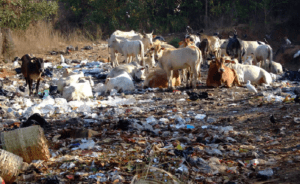
Introduction
Major environmental issues are pressing problems that have an effect on the state of our planet and the well-being of all living things.
These problems stem from various human activities and natural phenomena, posing significant risks to ecosystems, biodiversity, and the overall balance of nature.
Among the most important environmental concerns we face today are resource depletion, habitat loss, pollution, climate change, and deforestation.
These problems have broad repercussions, affecting not only the environment but also social stability, economics, and human health. For sustainable growth, it is essential to recognize and address these pressing environmental concerns immediately.
Major Current Environmental Issues
1 Pollution
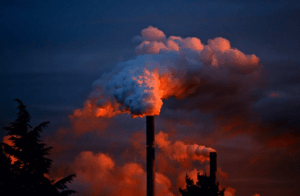
There are seven major types of pollution: air, water, soil, noise, radioactive, light, and thermal, and these are the primary environmental issues that affect our environment in a variety of ways.
All of these types of pollution are interconnected and influence each other. As a result, we must address all of them simultaneously.
Pollution of the air, water, and soil takes millions of years to recover. The leading polluters are industry and automobile exhaust. Toxins responsible for pollution include heavy metals, nitrates, and plastic.
Water pollution arises from oil spills, acid rain, and urban runoff, while air pollution results from gases and toxins emitted by industries and factories.
Also, the combustion of fossil fuels; and soil pollution are primarily caused by industrial waste, which deprives the soil of essential nutrients.
2 Soil Degradation
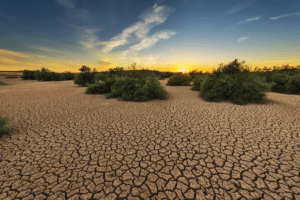
The ability to produce crops depends on the quality of soils, which ultimately affects global food security. According to UN estimates, approximately 12 million hectares of farmland are severely degraded each year.
Soils are damaged for a variety of reasons. Erosion, overgrazing, overexposure to pollutants, monoculture planting, soil compaction, land-use conversion, and other factors are examples.
There are numerous soil conservation and restoration techniques available today, ranging from no-till agriculture to crop rotation to water retention through terrace construction.
3 Waste Disposal
The overconsumption of resources and the production of plastics are causing a global waste disposal crisis. Developed countries are notorious for producing an excessive amount of waste or garbage and dumping it in the oceans, as are less developed countries.
Nuclear waste disposal poses significant health risks. Plastic, fast food, packaging, and low-cost electronic waste all endanger human health.
As a result, one of the most pressing current environmental issues is waste disposal.
4 Overpopulation

The planet’s population is approaching unsustainable levels due to a lack of resources such as water, fuel, and food. Population growth in less developed and developing countries is straining already scarce resources.
The use of chemical fertilizers, pesticides, and insecticides in intensive agriculture harms the environment.
5 Global Warming
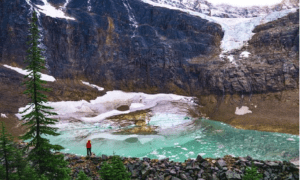
Greenhouse gas emissions from human activities cause global warming. Global warming causes rising ocean and earth surface temperatures. This results in natural disasters such as flooding, melting polar ice caps, and rising sea levels.
Further, unnatural precipitation patterns such as flash floods, hurricanes, wildfires, drought, excessive snow, or desertification occur. The consequences of Global warming are already being felt increasingly, as shown in the above photo.
Governments around the world have shown their commitment to tackling the issue through global agreements like the Kyoto Protocol. However, any tangible actions have yet to be seen.
According to some exciting studies, there is currently only one real opportunity to limit warming to 2 °C (characteristic of dangerous climate change) – developed countries’ economies must halt their own development and adopt an anti-growth strategy.
6 Water Pollution
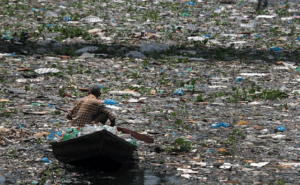
High-mountain water travels down to lower areas as rivers and streams.. Although contaminants are diluted and broken down more quickly in moving water than in still water, many rivers and streams around the world are seriously contaminated. Thus, it becomes one of the serious environmental issues.
This is mostly due to the concentration of the three major sources of pollution—industry, agriculture, and domestic—along the rivers.
Because rivers offer mobility and have historically been a handy site to dispose of garbage, industries, and communities have historically been situated around rivers.
Due to the abundance of nutrients that are deposited in the soil when rivers overflow, agricultural operations have a tendency to concentrate near rivers, where they are particularly fertile.
Toxic pollutants are entering our rivers, seas, and oceans as a result of industrial development, posing a serious threat to human health.
7 Natural Resource Depletion

Another critical current environmental issue is the depletion of natural resources. Humans use so many natural resources that it would take nearly 1.5 Earth to meet all of our needs.
This will only grow in the future as Asian countries like India and China continue to industrialize. Increased use of natural resources causes a number of other environmental issues, such as industrialization, population growth, and air pollution.
Natural resource depletion will eventually result in an energy crisis. The chemicals emitted by many natural resources contribute to climate change.
The use of fossil fuels produces greenhouse gases, which are primarily responsible for global warming and climate change.
People all over the world are working to transition to renewable energy sources such as solar, wind, biogas, and geothermal energy.
As a result, the cost of installing infrastructure and maintaining these sources has decreased in recent years.
8 Deforestation

Our forests are natural carbon dioxide sinks that also produce fresh oxygen and aid in temperature and rainfall regulation.
Forests currently cover 30% of the land, but every year tree cover is lost, amounting to the country of Panama, due to the growing population demand for more food, shelter, and cloth.
Deforestation is simply the removal of green cover in order to make land available for residential, industrial, or commercial use. Tree-cutting is a major legal crime, making it serious a environmental issue.
9 Ocean Acidification
It is a direct result of excessive CO2 emissions. Humans produce 25% of total atmospheric CO2.
The acidity of the ocean has increased over the last 250 years, but by 2100, it may have increased by 150%. The main impact is on shellfish and plankton, just like human osteoporosis.
10 Climate Change
Climate change is yet another environmental issue that has emerged in the last few decades and is caused by global warming, which results from an increase in atmospheric temperature. Burning fossil fuels and industry emissions of toxic gases are the main causes of the temperature increase.
Governments all over the world are engaged in continuous work to reverse harmful climate changes.
Climate change has a variety of negative consequences, including the melting of polar ice, changes in seasons, the emergence of new diseases, the frequent occurrence of floods, and changes in overall weather patterns.
11 Drinking water scarcity
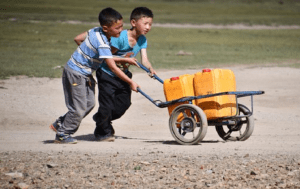
Arid regions face a constant struggle for enough water to drink. Epidemics, chronic illnesses, racial tensions, and water disputes drive people quit their communities in search of better living elsewhere.
Europeans have already felt the effects of water scarcity when their cities were overrun with migrants from Africa and the Middle East.
As the human population competes for this resource, water has become an economic and political issue.
Water scarcity is a critical environmental issue, as water is life! Water that is safe to drink, like river water, is becoming increasingly scarce. Desalinization is one of the options suggested.
12 Polar Ice Caps
The melting of the polar ice caps is a contentious topic. Although NASA studies show that the amount of ice in Antarctica is increasing, this increase is only one-third of what is being lost in the Arctic.
There is ample evidence that sea levels are rising, with melting Arctic ice caps playing a major role.
Melting polar ice caps could cause extensive flooding, contamination of drinking water, and significant changes in ecosystems over time.
13 Creating Unsustainable Waste – solid waste
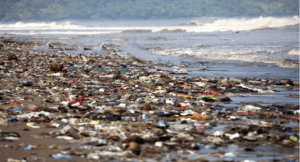
The massive production of waste as a result of our overconsumption is a major threat to the environment and therefore it is taken as one of the major environmental issues.
According to the study, the average person generates 4.3 pounds of waste per day, with the United States alone producing 220 million tonnes per year.
This overconsumption generates non-biodegradable trash in the form of plastic packaging, toxic e-waste, and harmful chemicals that leach into our waterways.
When this waste ends up in landfills, it produces massive amounts of methane, which ranks as one of the worst greenhouse gases due to its high potential for global warming. It poses significant explosion risks.
Because modern technology allows us to access digital environments, many of your requirements can be met in the “cloud”. Consider your purchases carefully.
14 Biodiversity loss

Human activity is causing the extinction of species and the loss of biodiversity. Ecosystems, which took millions of years to perfect, are in jeopardy when any species’ population is decimated.
The balance of natural processes such as pollination is critical to the survival of the ecosystem, and human activity threatens it. Another example is the destruction of coral reefs in various oceans, which support diverse marine life.
15 Public Health Concerns
The current environmental issues endanger both human and animal health. Water pollution is the world’s leading health risk, threatening both quality of life and public health.
Toxins, chemicals, and disease-carrying organisms are carried in runoff to rivers. Pollutants cause respiratory diseases such as asthma and cardiac-vascular problems. High temperatures promote the spread of infectious diseases such as Dengue.
16 The Nitrogen Cycle
We frequently ignore the consequences of human nitrogen use. Nitrogen is an essential component of all life. When the nitrogen cycle is not balanced, problems arise.
Fixation refers to the process of converting or ‘fixing’ it to a more usable form. Fixation can occur biologically, through lightning, or industrially.
People have discovered how to convert nitrogen gas to ammonia (NH3-) and nitrogen-rich fertilizers to supplement the amount of nitrogen fixed naturally.
Agriculture is thought to be responsible for roughly half of all nitrogen fixation on the planet, thanks to the cultivation of nitrogen-fixing crops and the production of man-made fertilizers.
When nitrogen is used in excess of plant demand, it can leach from soils into waterways and contribute to eutrophication.
Excess nitrogen in water can harm marine ecosystems by stimulating plant and algae growth. This prevents light from reaching deeper waters, causing harm to the rest of the marine population.
The issue can also arise during nitrification and denitrification. Nitrous oxide (N2O) can be produced if the chemical process is not completed. N2O is a powerful greenhouse gas that contributes to global warming.
18 Depletion of the Ozone Layer
Ozone layer depletion theory

The ozone layer is an invisible layer of protection that surrounds the planet and shields us from the sun’s harmful rays. Pollution from Chlorine and Bromide found in chlorofluorocarbons is blamed for the depletion of the atmosphere’s critical Ozone layer (CFCs).
When these toxic gases reach the upper atmosphere, they cause a hole in the ozone layer, the largest of which is above Antarctica.
CFCs are prohibited in many industries and consumer products. The ozone layer is valuable because it prevents harmful UV radiation from reaching the Earth. Currently, this is a burning environmental issue.
19 Acid Rain
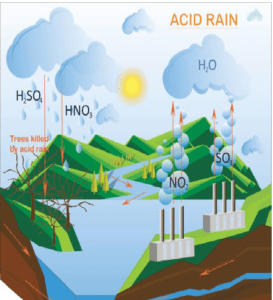
Acid rain is caused by the presence of certain pollutants in the atmosphere. Acid rain forms when sulfur and nitrogen oxides from burning fuels, volcanoes, and decaying plants react with air and moisture.
Acid rain is a well-known environmental issue that can have serious consequences for human health, wildlife, and aquatic species.
17 Urban sprawl
The migration of the population from high-density urban areas to low-density rural areas, which results in the city spreading over more and more rural land, is referred to as urban sprawl.
Land degradation, increased traffic, environmental issues, and health issues all result from urban sprawl. Instead of being replaced, the ever-increasing demand for land displaces the natural environment’s flora and fauna.
20 Overfishing

Overfishing has a negative impact on natural ecosystems, causes an imbalance in marine life and thus becomes a serious environmental issue.
It is estimated that approximately 63% of global fish stocks are overfished. Overfishing caused fishing fleets to migrate to new waters, further depleting fish stocks.
Many areas of the world’s oceans have depleted fish stocks. Important fish species are suffering from a catastrophic population decline.
The so-called cod crisis (a sharp decline in the number of Atlantic cod due to fishing) exemplifies people’s willingness to exploit the planet’s natural resources until they vanish completely. Unsustainable fishing practices becomes a threat for many other fish and marine organisms.
Without proper management, these vital resources, on which they rely for their daily bread, will become unsustainable as a food source. Furthermore, it is detrimental to coastal communities that rely on fishing for a living.
21 Genetic Engineering
Genetic engineering is the use of biotechnology to modify food genetically. Food genetic modification causes an increase in toxins and diseases because genes from an allergic plant can transfer to the target plant.
Because an engineered gene may be toxic to wildlife, genetically modified crops can cause serious environmental issues.
Another disadvantage is that the increased use of toxins to create insect-resistant plants can result in organisms that are resistant to antibiotics.
22 Ocean pollution around the world
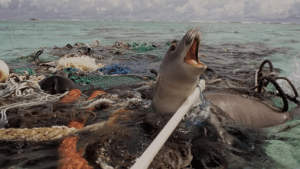
Plastic waste is now treated as one of the world’s most dangerous environmental issues. For several years, the scientific environmental community has been looking for technologies to solve problems like plastic waste pollution in the oceans.
At the moment, five massive garbage islands have been discovered drifting in the waters of the Pacific, Atlantic, and Indian oceans, posing significant risks to all of their inhabitants.
Plastic microparticles are mistaken for phytoplankton by some animals and fish. Larger plastic pieces in bright colors attract seabird chicks, and the young birds swallow them, dooming themselves to a painful death.
There are currently no viable alternatives to this situation. New concepts and ideas, on the other hand, are constantly brought to the experts’ attention.
23. Noise Pollution
Noise pollution is a serious threat to the quality of man’s environment. Noise, by definition, is over-loud or disturbing sound. Sound levels are measured in decibels (dB). It is a unit for expressing the relative intensity of sound on a scale from 0 to 130.
Excessive noise from sources like traffic, industrial activities, and construction negatively impacts human health and the well-being of wildlife.
Noise pollution can disrupt ecosystems, and communication among animals, and cause stress-related health issues.
Conclusion
Major environmental issues pose significant challenges to the well-being of our planet and future generations. From climate change and deforestation to pollution and loss of biodiversity, these issues demand immediate attention and action.
The depletion of natural resources due to overpopulation, pollution, and industrialization exacerbates these problems.
It is crucial for individuals, communities, governments, and international organizations to come together and address these environmental challenges through sustainable practices, conservation efforts, policy reforms, and public awareness campaigns.
By prioritizing the protection and preservation of our natural resources, we can work towards a healthier, cleaner, and more sustainable planet for all. It is our responsibility to take collective action and make a positive impact on the environment to ensure a brighter future for generations to come.

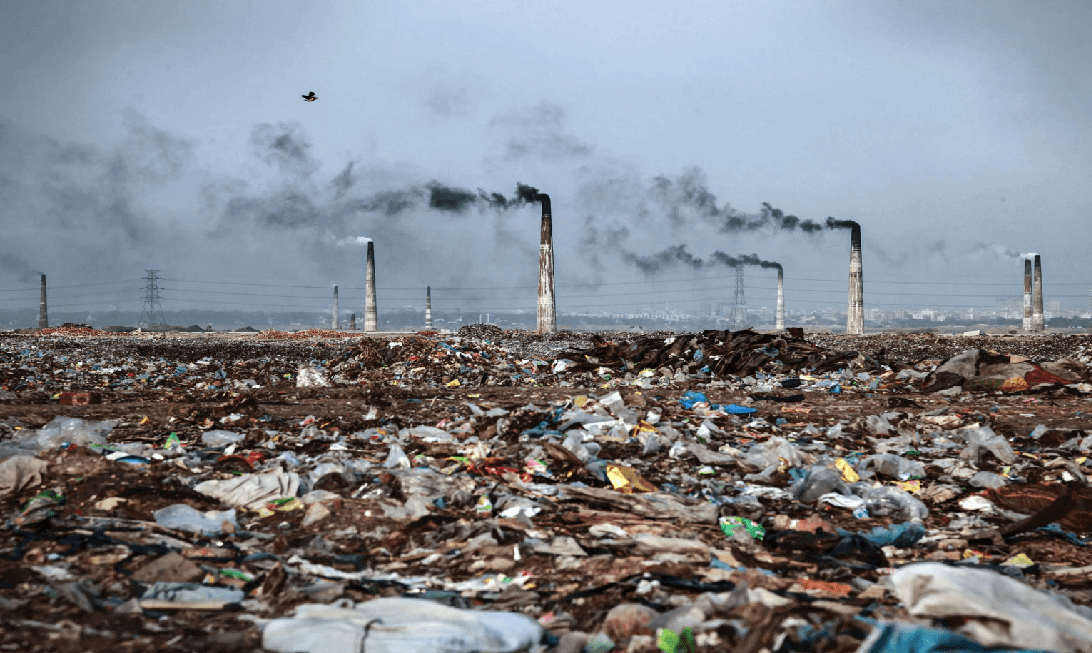
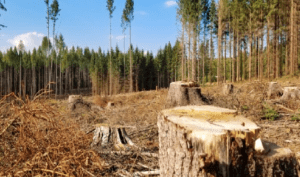

[…] that is a really serious problem. The rapid depletion of natural resources is one of the toughest environmental issues facing the […]
[…] at environmental sustainability. These difficulties are caused by a variety of things, including environmental issues, sociocultural effects, economic changes, and shifting traveler preferences. For tourism to have […]
Gr8 writeup for serious issues
[…] of the most important environmental issues of our time is plastic pollution. Sometimes we need to take a step back and think about how the […]
Very interesting points you have observed, thank you for putting up.Blog range